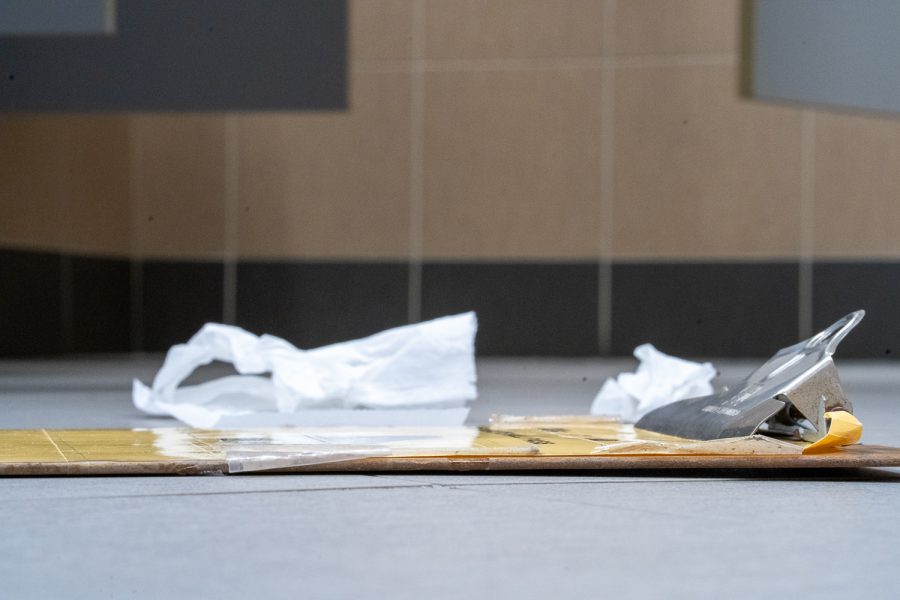Passive About Pathogens
The pandemic proved just how lacking our traditional hygiene habits were.
Given how many germs and bacteria lie in school bathrooms, the now-abandoned clipboard pass may have been the most unsanitary object in all of Wexford.
Do you remember the days when we weren’t concerned about how long a virus could live on a desk? Or the last time you exited a classroom without applying some hand sanitizer? Or when you didn’t feel the need to constantly clean your cell phone with a Lysol wipe?
Yeah, me neither. But while those times now feel like another lifetime, seven short months ago, most Americans weren’t all that paranoid about germs. Most people didn’t wash their hands eight times a day or care if someone coughed right beside them.
Then COVID hit, and it transformed how we looked at pathogens. Suddenly, they were something to worry about. And all the changes we made in our day-to-day lives to try to stop the transmission of the virus showed just how horrific our hygiene was to begin with.
One of the reasons hand washing was talked about so much at the start of pandemic was that it wasn’t a common practice. In fact, in 2018, the CDC reported that only 35% of men and 65% of women washed their hands after using the restroom.
Now, considering those admittedly disgusting numbers, think about how, for years, NASH has had wooden or clipboard bathroom passes in almost every classroom that just got passed around from person to person.
Fortunately, they are not in use this year, but why did it take a pandemic for us to question them?
Sanitizing hands and desks has also become a standard protocol at NASH this year. However, every winter, when the flu ravaged the hallways, we probably should have been wiping desks down between periods and using hand sanitizer regularly, anyways. Spacing out desks, or at least not having them face each other, wouldn’t have hurt, either.
Not to mention, before a fever meant you may have the coronavirus, dozens of students would come to school sick every day — just to take a test or be present for a lecture. It’s a habit that, unfortunately, isn’t all too rare, considering seven in ten parents have admitted to sending their young child to school, despite knowing he or she was sick. Hopefully, after all of this is over, with the implementation of remote learning, students will be more comfortable staying home when they need to, and we’ll have less contagious zombies walking around.
Our society’s questionable hygiene expanded beyond NASH’s walls, too. A study in 2017 found an average of 17,000 different types of bacteria on high school students’ cell phones. Weights at the gym have been found to have 362 times more bacteria than a toilet seat. And harmful pathogens can stay on airplane seats, tables, and windows for days.
I’m not by any means saying we should live the rest of our lives in fear of germs, but we should at least pay more attention and make small adjustments in order to be safer. Even after we establish a vaccine for the coronavirus, there will still be everyday illnesses that could be very preventable if we were just more conscious of our health.
A small act like sanitizing your phone can make a huge difference. But protecting other people from your germs helps to create a healthy community, too. Wipe down the gym equipment after you use it. When you have a cold in the future, wear a mask if you have to go out. In many Asian countries, it is actually seen as a public courtesy and was the norm long before the coronavirus.
Simply, pay attention to your germs as much as you may pay attention to everyone else’s. I hope that if we have learned anything about public health in recent months, it’s that we’re all in this together.
So while we are anxiously waiting for the day when everything goes back to normal, let’s not go back to our traditional hygiene habits. The pandemic changed how we view almost everything about our lives and our school — it only seems fair that it should make us doubt our communal bathroom passes, too.

Kristen Kinzler is a senior at NASH who loves expressing her opinions and drinking excessive amounts of coffee and tea. When she's not writing or rewatching Supernatural for the fourteenth time, she can probably be found playing lacrosse, reading, or watching hockey. She plans to attend Bowdoin College next fall.



